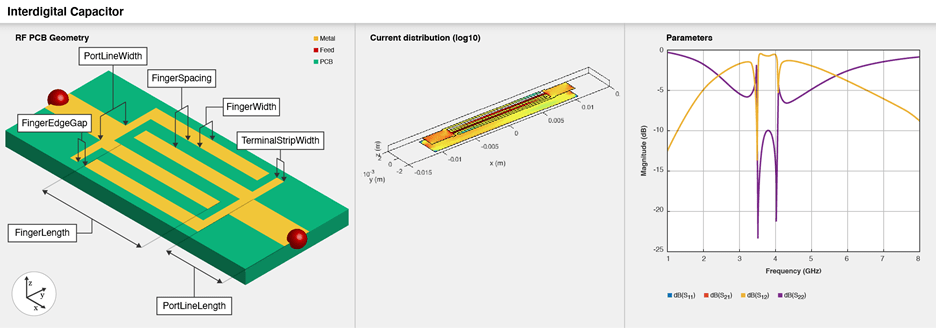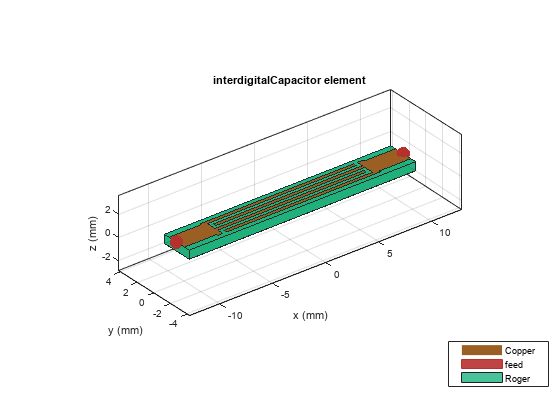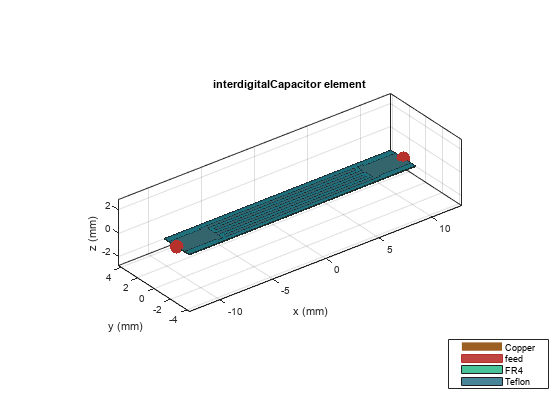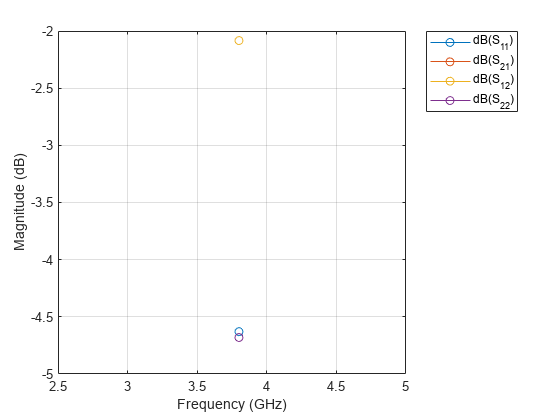interdigitalCapacitor
Description
Use the interdigitalCapacitor object to create an interdigital
planar capacitor (IDC). IDCs are used in high frequency applications such as:
Receiver circuits where antenna radiators are connected to RF
Wireless data communications with RFID
Humidity and solution concentration measurements
Lab-on-chip devices (LOCs)
Note
This PCB object supports behavioral modeling. For more information, see Behavioral Models. To analyze the behavioral
model for an interdigital capacitor, set the Behavioral property in the
sparameters
function to true or 1

A two-port series IDC with microstrip form feeder lines supports single and multiple dielectrics. It is a coplanar structure consisting of multiple comb electrodes or intersecting fingers with spaces between the fingers. An IDC can have identical port line lengths and widths on either sides.
Creation
Description
capacitor = interdigitalCapacitor creates a basic interdigital
capacitor with default property values for an operating bandwidth of 3.6-4 GHz.
capacitor = interdigitalCapacitor(
sets Properties using one or more
name-value arguments. For example,
Name=Value)interdigitalCapacitor(NumFingers=10) creates an interdigital
capacitor with 10 fingers. Properties not specified retain their default values.
Properties
Object Functions
capacitance | Calculate capacitance |
charge | Calculate and plot charge distribution |
current | Calculate and plot current distribution |
feedCurrent | Calculate current at feed port |
getZ0 | Calculate characteristic impedance of transmission line |
layout | Plot all metal layers and board shape |
mesh | Change and view mesh properties of metal or dielectric in PCB component |
shapes | Extract all metal layer shapes of PCB component |
show | Display PCB component structure or PCB shape |
sparameters | Calculate S-parameters for RF PCB objects |
RFConnector | Create RF connector |
Examples
More About
References
[1] Pozar, David M. Microwave Engineering. 4th ed. Hoboken, NJ: Wiley, 2012.
[2] Jungreuthmayer, Christian, Gerald M. Birnbaumer, Peter Ertl, and Jürgen Zanghellini. “Improving the Measurement Sensitivity of Interdigital Dielectric Capacitors (IDC) by Optimizing the Dielectric Property of the Homogeneous Passivation Layer.” Sensors and Actuators B: Chemical 162, no. 1 (February 2012): 418–24. https://doi.org/10.1016/j.snb.2011.12.009.
[3] Ruppin, R. “Surface Polaritons of a Left-Handed Material Slab.” Journal of Physics: Condensed Matter 13, no. 9 (March 5, 2001): 1811–18. https://doi.org/10.1088/0953-8984/13/9/304.
[4] Caloz, Christophe, and Tatsuo Itoh. Electromagnetic Metamaterials: Transmission Line Theory and Microwave Applications: The Engineering Approach. Hoboken, NJ, USA: John Wiley & Sons, Inc., 2005. https://doi.org/10.1002/0471754323.



